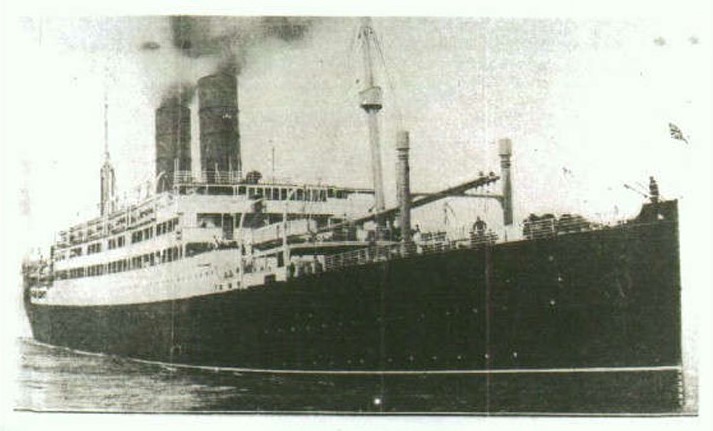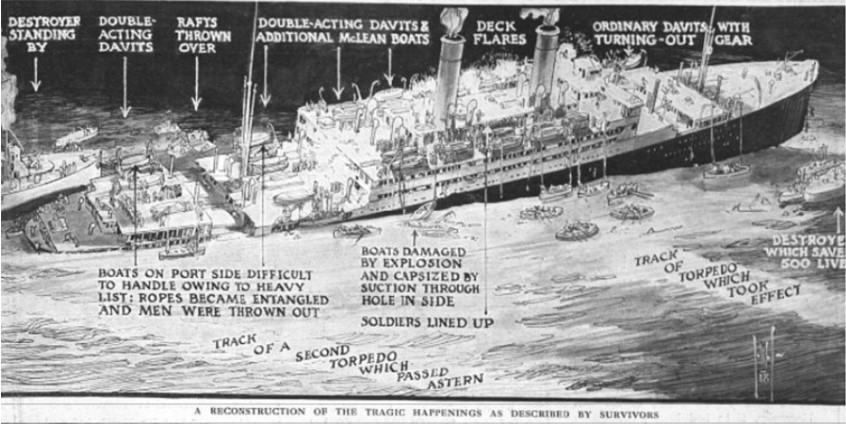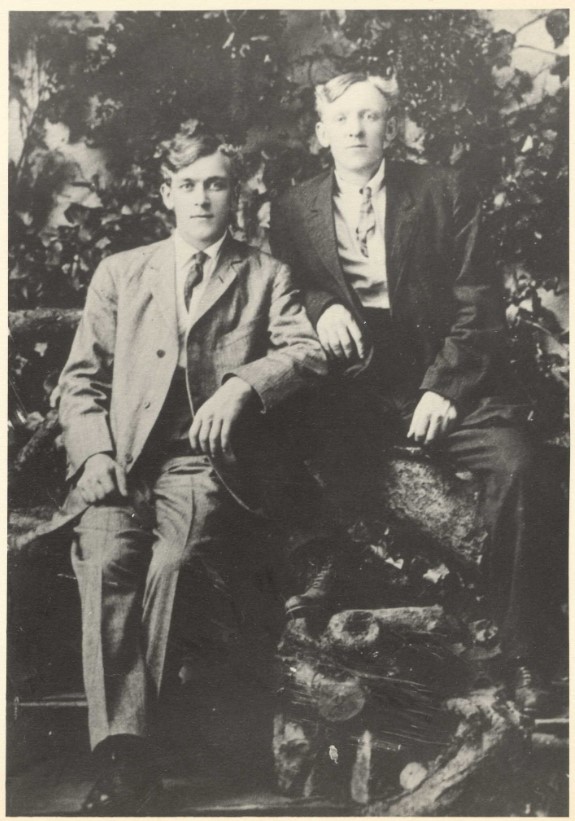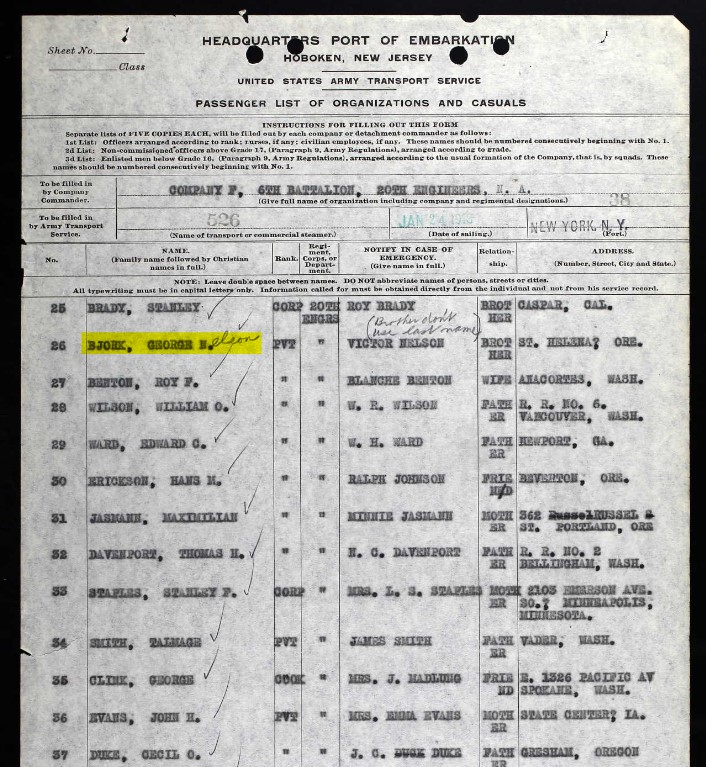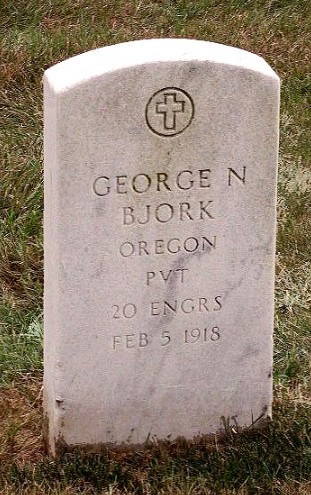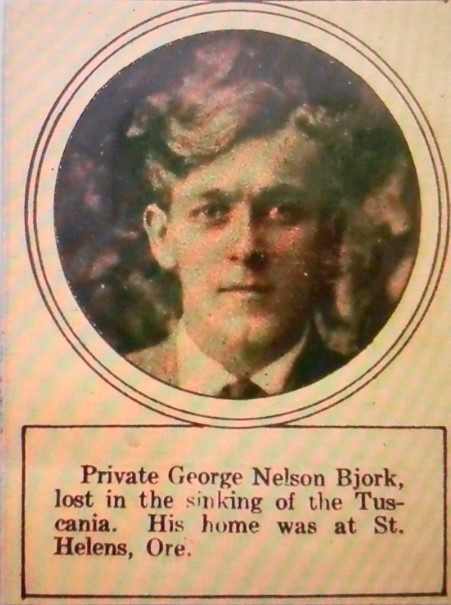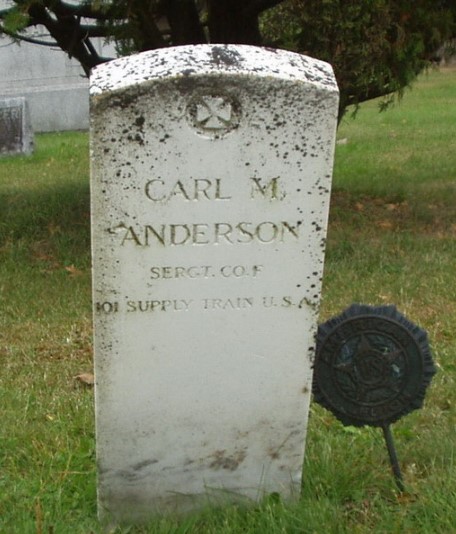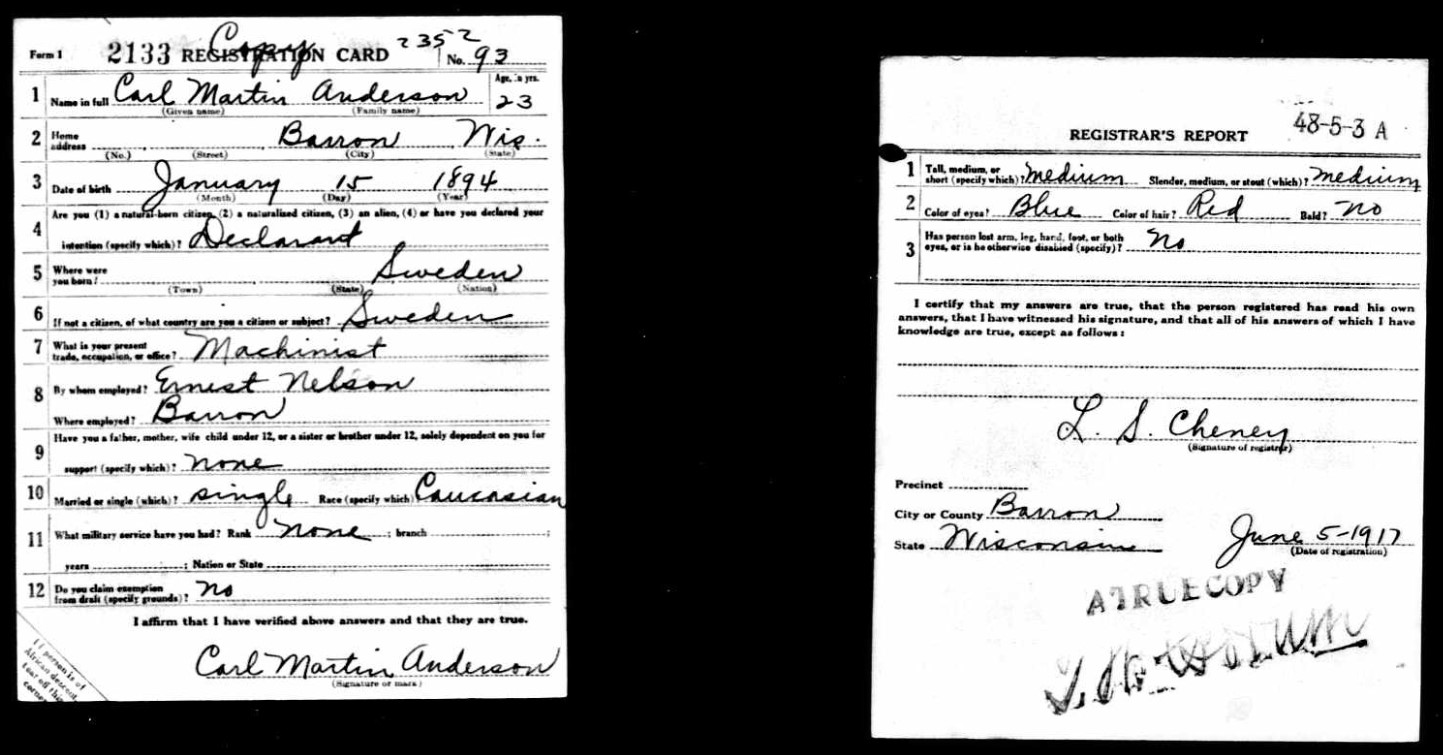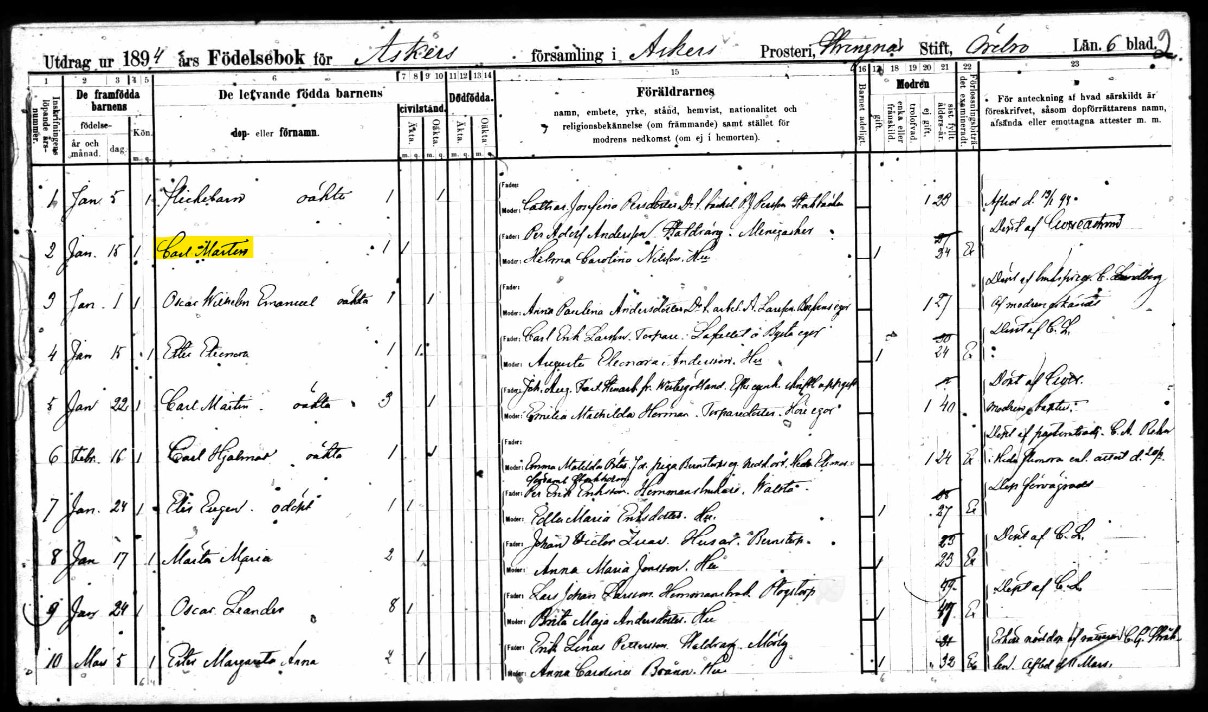I always want to know who the soldiers were, where they came from and how their life were, before it ended on the battlefields. I seldom give up. This case is not an exception.
I was looking through some lists from the American National Archive, some lists of those who fell in the great war and never came home again. I am looking through the documents about the soldiers from different states, in this case Wisconsin.
I know that I won’t find many soldiers that I don’t already have in my database, but there are other things to learn from these lists, such as finding those Swedish born soldiers who were brought home to America and reburied in a new American Cemetery, or in another local cemetery.
I look for Scandinavian names, and I can see a lot of Swedish, Norwegian and also some Finnish names, and this gives me a good picture over where the immigrants lived, in what county, in what state, and learn from where the different groups settled.
In this case I found the name Fred Orquist, and “quist” gives me a clue that this might be a Swedish born soldier, or a soldier from a Swedish family, born in America.
I searched for more information about Fred on Ancestry, but that gave me quite few results,. I managed to find some notes from Veterans Administration Master Index, that gave me some date of birth, and date of death. The date of death was the same as in the list over dead soldiers from Wisconsin. Now I also had some other dates to look for.
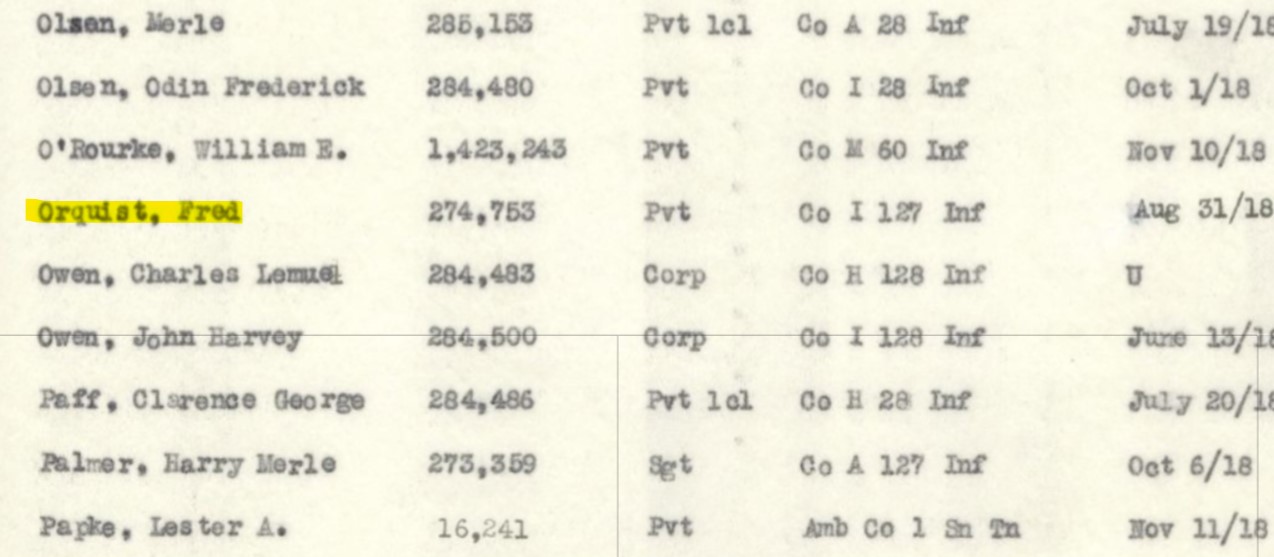
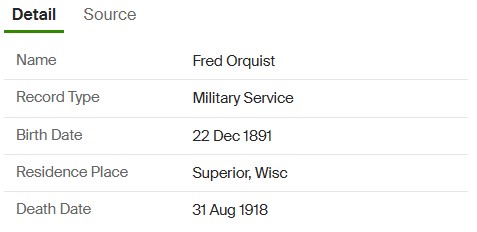
I also find a photo of his headstone, from “Findagrave”, and also the document over his present burial on Arlington American Cemetery in Virginia. On the card it says “White European, Died in France”
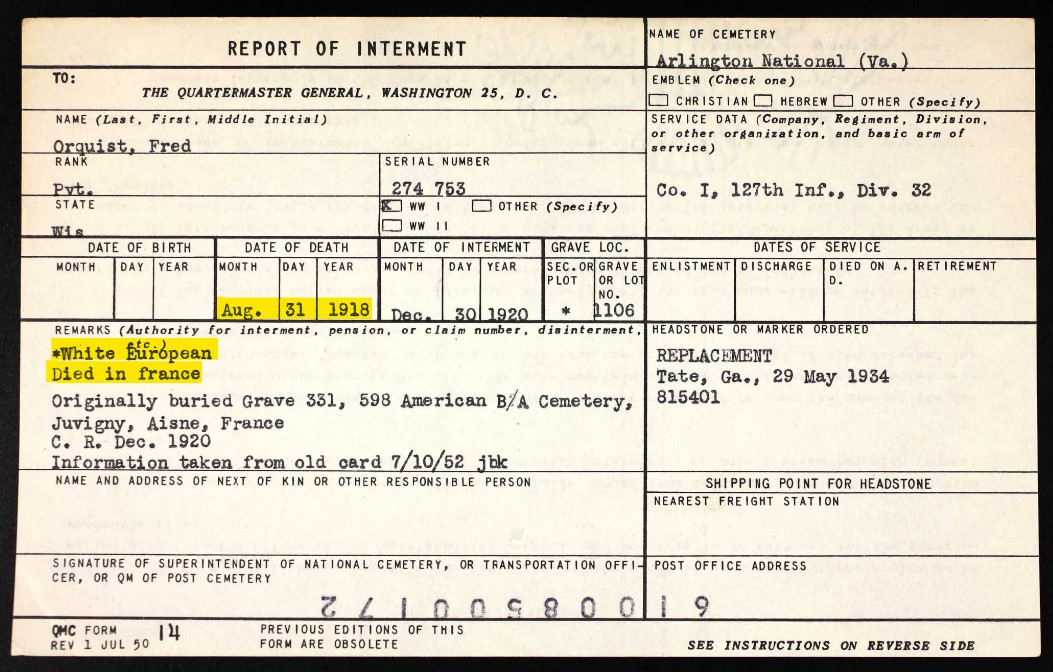
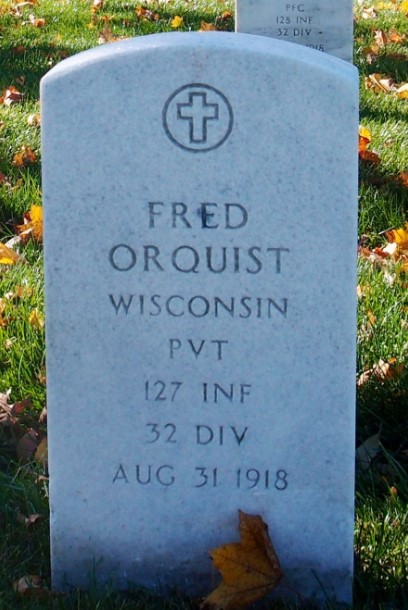
I decided to stay on Ancestry and search for Swedish versions of his surname. This is when I use my earlier experience.
Could it be Örquist? No, no more result from that. Maybe Årquist? No, not at all. I start to take away information, to find more clues, but no result.
I tried Öquist. without the “R”. Ah, another hit, here I get his draft document, and in this case it says Fred Oquist. The date of birth is also the same. This must be the same soldier as Fred Orquist. When did they put in the extra “R”?
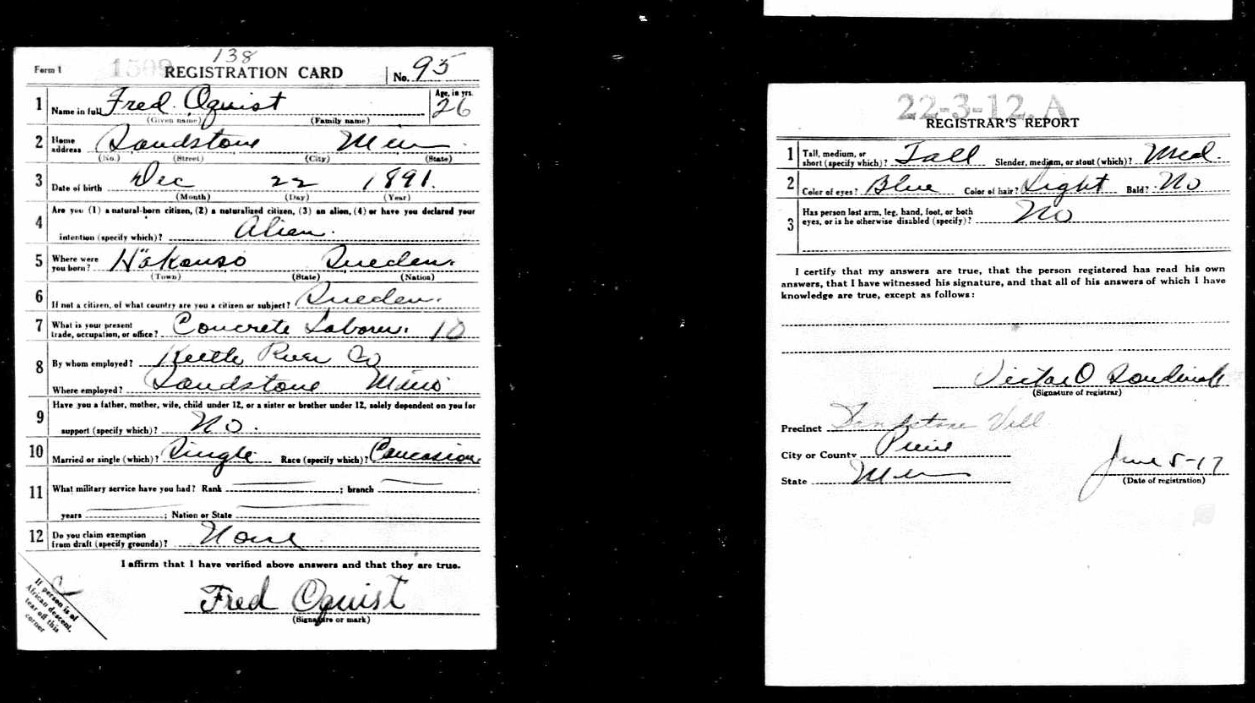
Fred Oquist was from Sweden, but from where in Sweden? “Hökenso”? Hm, can it be “Hökensås” a place quite near to where I live today?
I decided to look in the Swedish Archives, but Fred is not a common name in Sweden at that time, not now either, so Fred must a nickname from something else, more Swedish like.
I know from earlier that Fred has been “Fredrik”, “Gottfrid” or “Enfrid” before, but this time I use only the surname, “Öquist”, to search for more clues. It gives me a quite long list as it seems to have been a quite common surname at that time.
I decided to take the chance to search for “Fredrik”, and also use the date of birth, December 22nd, 1891. I don’t use “Fredrik Öquist”, as it seldom comes up with both name and surname in those cases, as they mostly only had the name in the church books, and the surname on the row of the father or mother.
I get several hits, and then something suddenly caught my eye. I saw the name of a farm, “Håkansö”. Could this be “Hökenso”?
On one row I find an individual whose name was Fredrik August, born December 22nd, 1891, in Piteå parish, Norrbotten county, on the farm of Håkansö. Could Fredrik August Öquist be “Fred Orquist”?
Yes, most likely Fred Orquist was Fredrik August Öquist from Håkansö. The name on the list of Wisconsin dead soldiers, has now become an known individual.
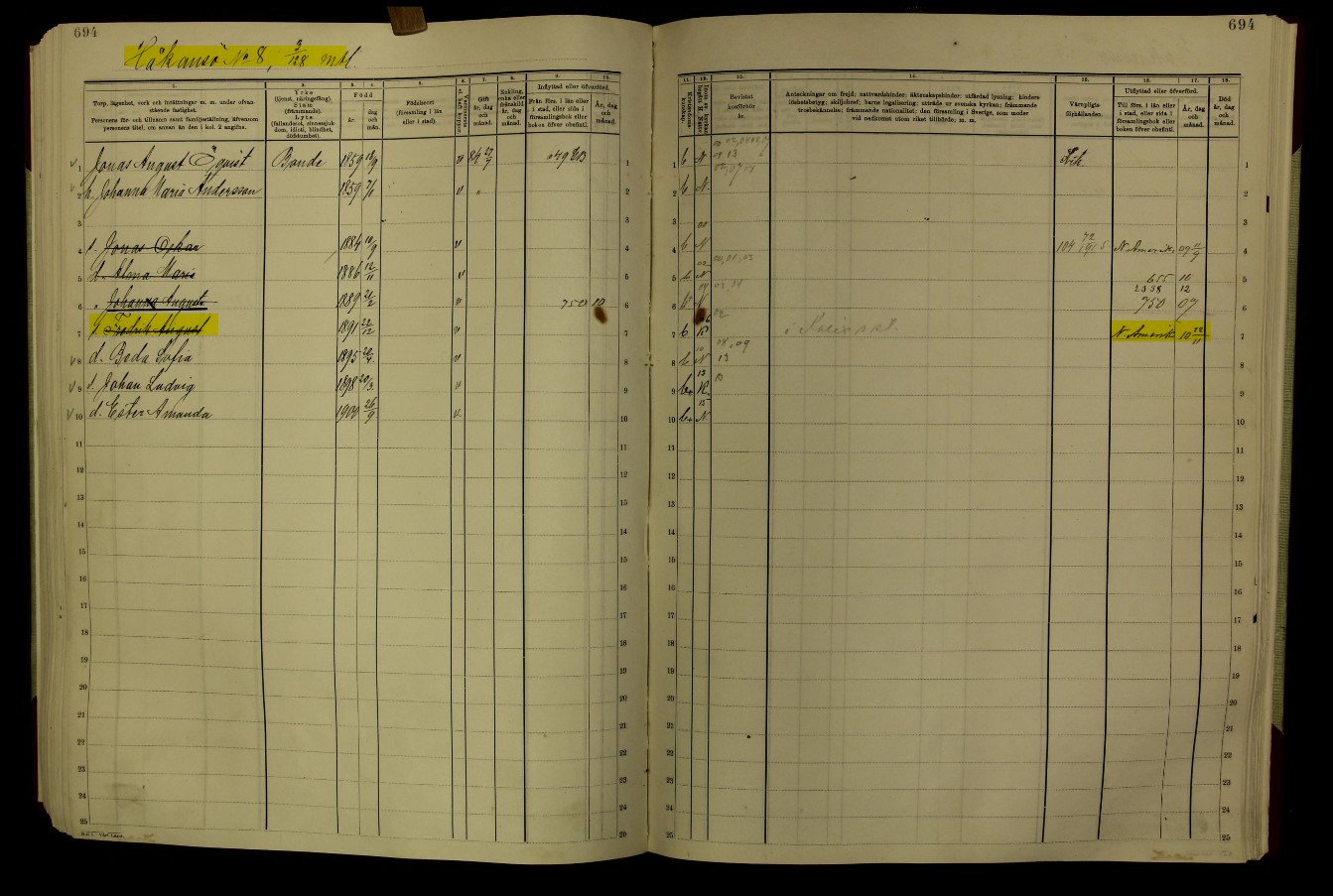
Fredrik August Öquist is noted in the church books to have left Sweden in 1910, but I went back to Ancestry and used the real name, and found passenger lists from 1907, when he went over to North America. I can read a weak note in the church book, that he is in Kalix, and that correlates with the destination in the passenger list, Nederkalix.
He first went to Chicago, via Copenhagen, and later ended up in Sandstone, Minnesota, where he lived when he was drafted.
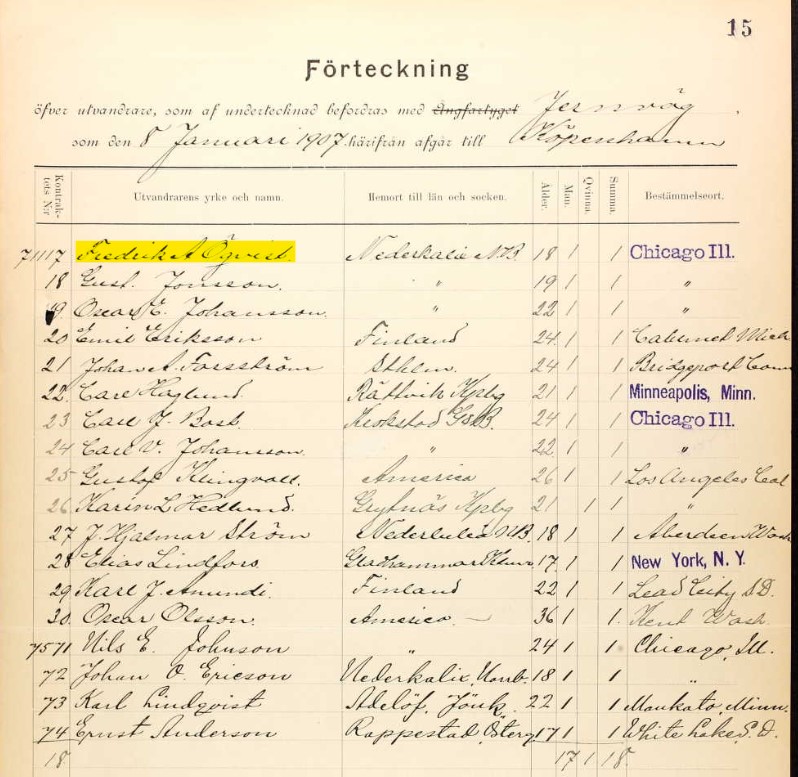
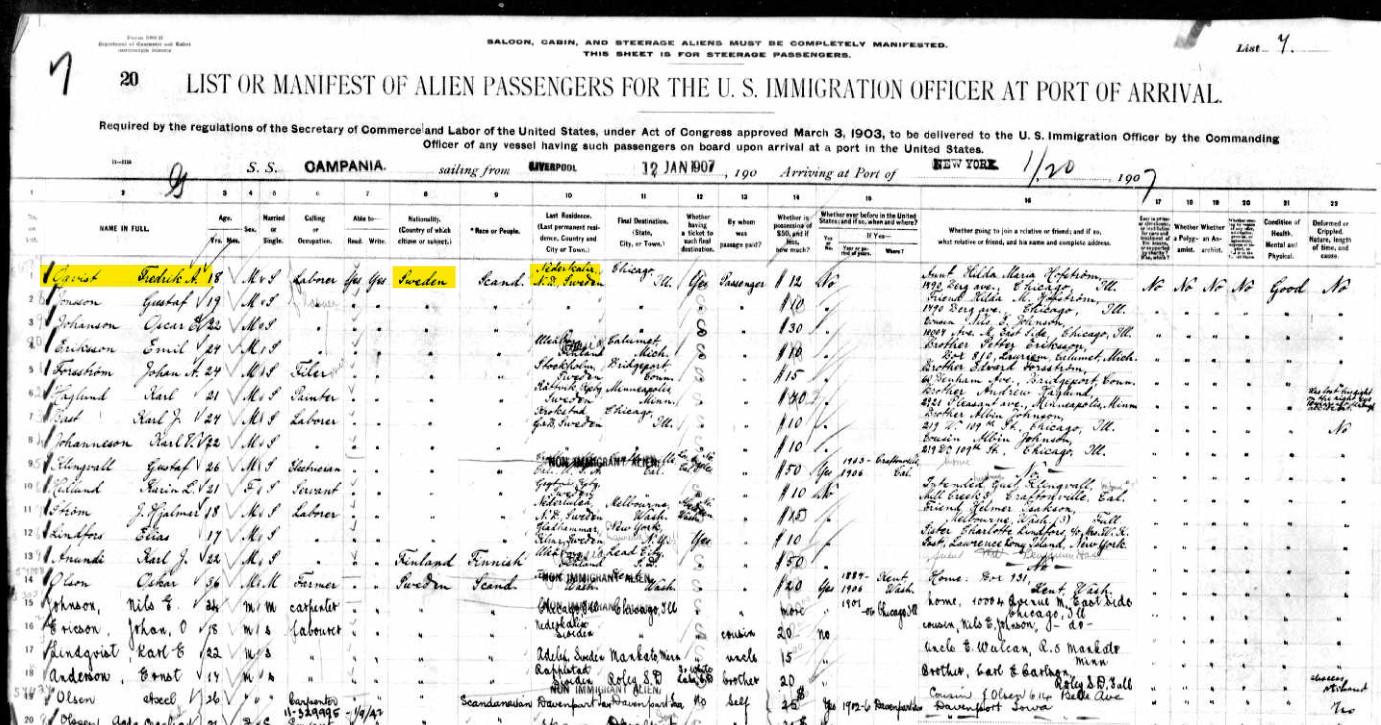
Fred went over to France in February 1918, and as his Next of Kin, he gave his friend’s wife, as his friend, Archibald R Mix, also were on the ship. Fred seems to have been in the States alone, without any relatives. Fred belonged to Company “G”, 127th Infantry Regiment.
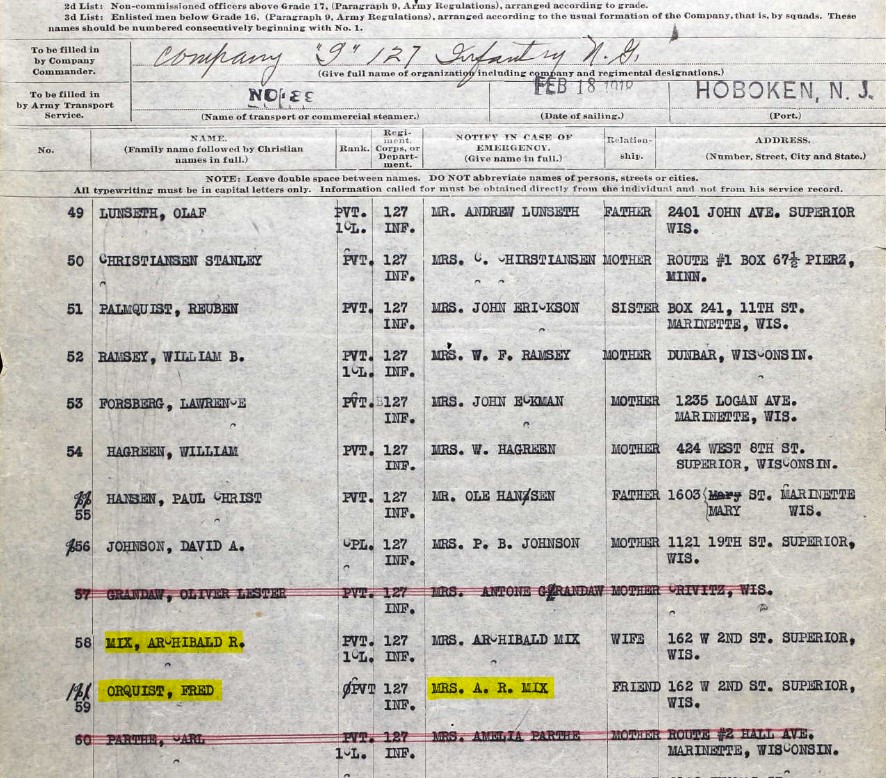
Fred seems to have been involved in heavy fighting around the area of Juvigny in France, when he was killed in action. Fred was buried in the field among other Americans who also fell in the region. He seems to have been moved directly from his first grave to the site he has now on Arlington Cemetery, and I find that quite unusual.
Maybe that was a common thing, but I think it was more common that the soldiers were moved to the larger American cemeteries in France, and then moved to another locations, depending on what their relatives wanted.
On his casualty card we can also see his friend’s wife’s name, Mrs A. R. Mix, the same as on the passenger list.
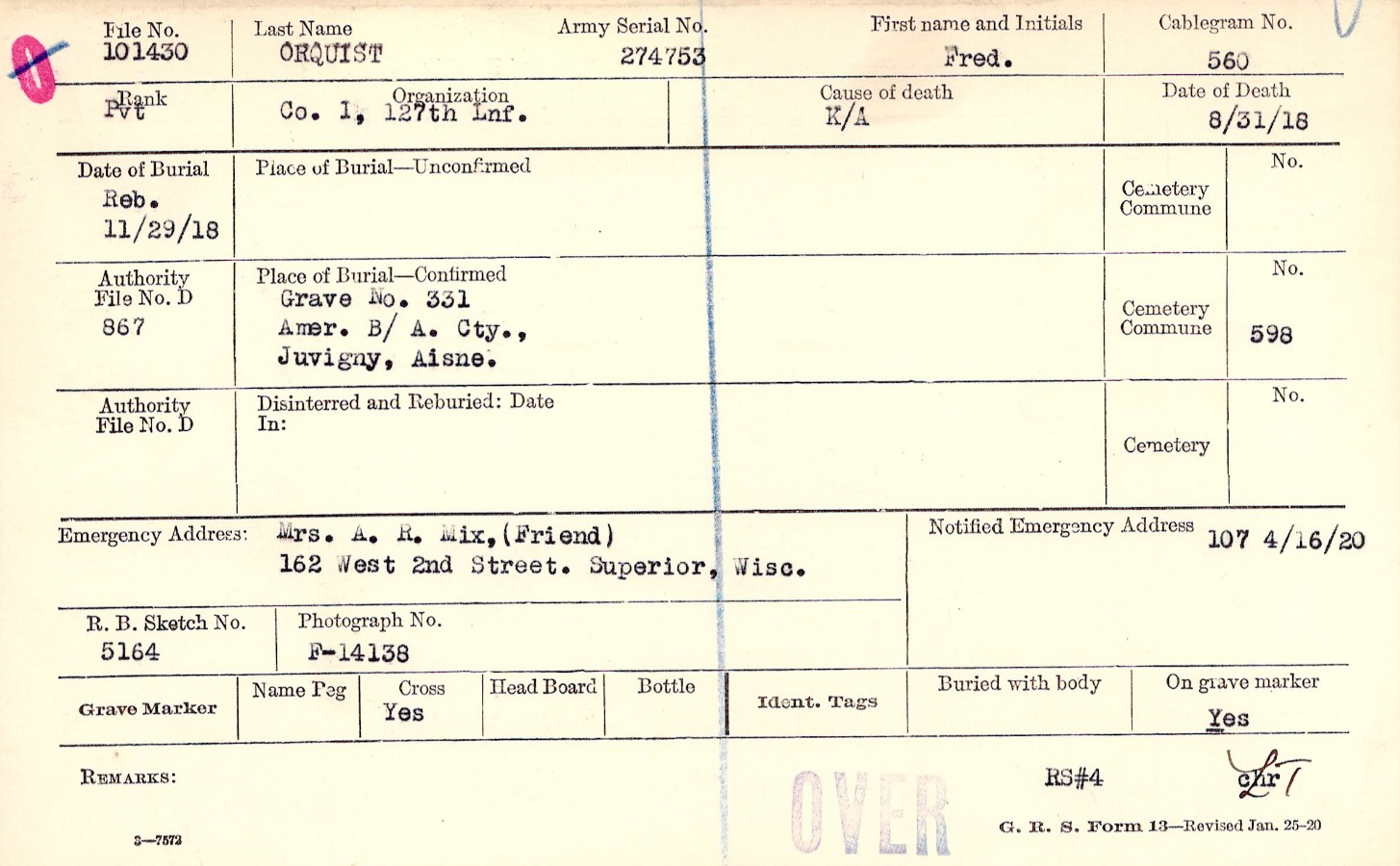
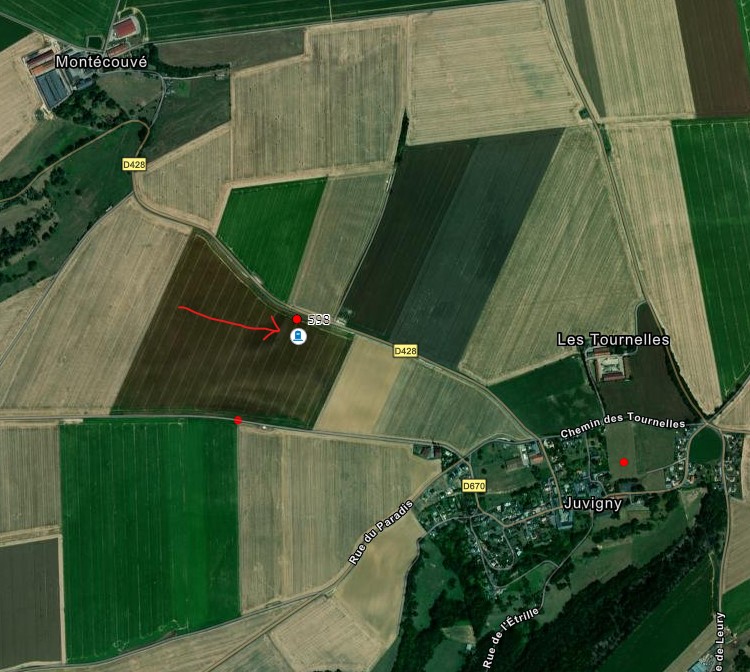
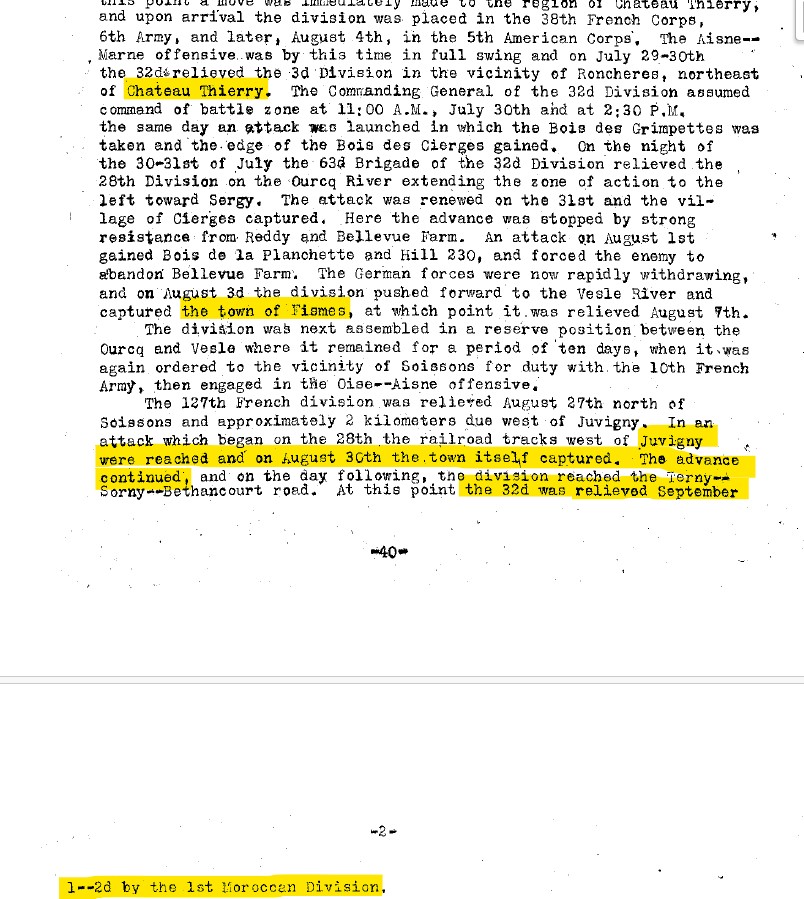

“I now know who you were, Fred Orquist. I really wonder how you were as a person, and what you did in North America, except working as a Concrete Labourer. Maybe I will find out more about you, but most of all I want you to rest in peace.”

